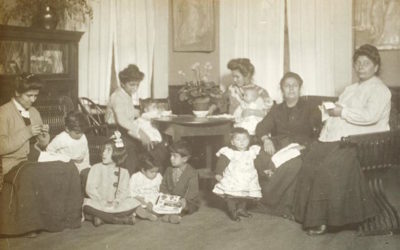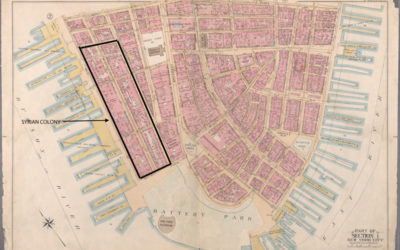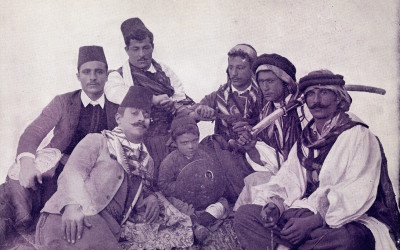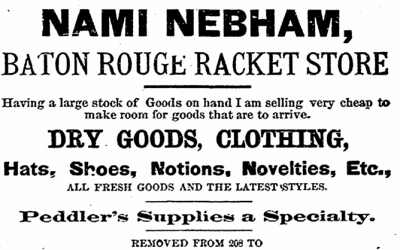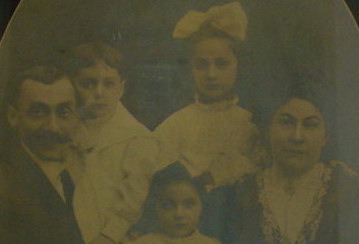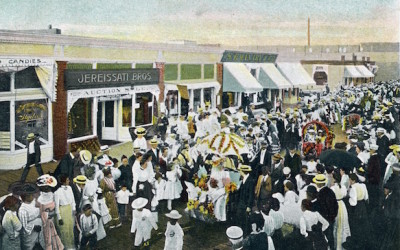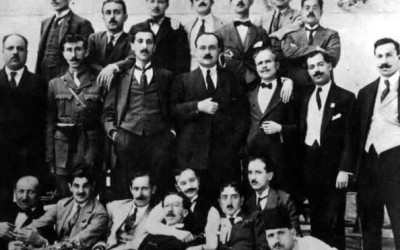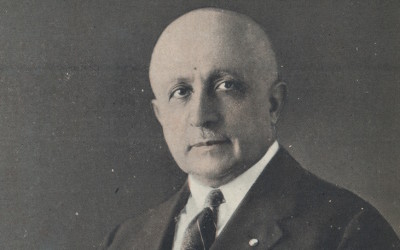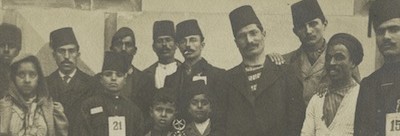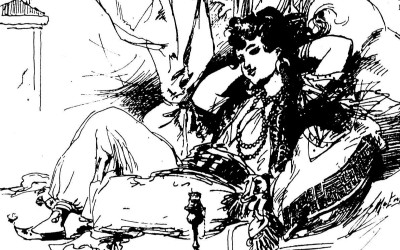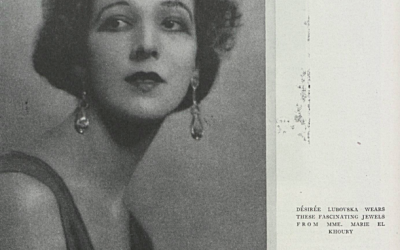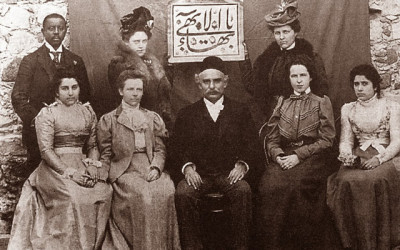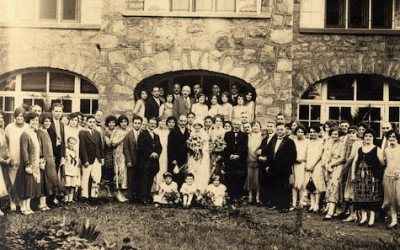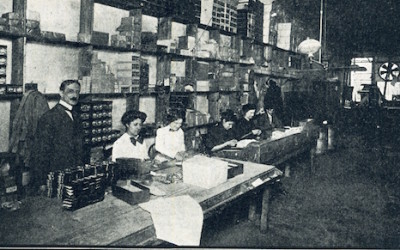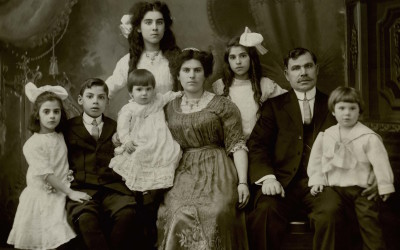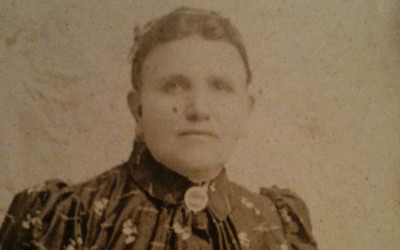KalimahPress Blog
A series on the early Arab immigrant experience
Carneys: Carnival Impresarios of the Early Syrian Diaspora
There is a long history of Arabs performing in the United States, beginning before the Civil War when North African acrobatic troupes (some including women) traveled around the East Coast and as far west as Iowa, performing athletic feats and tumbling on vaudeville...
The Syrian Colony of Boston, 1890-1910
(Above): Syrian women sewing at Denison House, Boston, 1912. It is interesting to compare the Syrian colonies of New York City and Boston. Both cities were major ports in the nineteenth century and, along with Providence and Philadelphia, were east coast entry points...
THE SYRIAN COLONY ON WASHINGTON STREET and the “Lost” Lower West Side
The lower west side of Manhattan, part of the historic First Ward, was a vibrant, architecturally significant neighborhood before it was completely obliterated by the construction of the Brooklyn Battery Tunnel and the World Trade Center in the mid-twentieth century....
Selling Orientalism at the Chicago Fair: the Middle Eastern Presence
In the spring and summer of 1893, a spectacle such as had never been seen before in America came to life on the shores of Lake Michigan. The Columbian Fair attracted more than twenty-seven million visitors in its five-month run, embodying the proud (some say...
Repudiated by their Peers
Why would two seemingly respectable Syrian immigrants be publicly repudiated by their countrymen? As everyone who reads this blog knows, I have an affection for, if not an obsession with, stories that seem to contradict the Syrian myth of success, assimilation, and...
A Special Relationship: Syrian Christians and Syrian Jews in 19th Century New York
When I was researching my book, Strangers in the West, about the Syrian colony of New York City in the nineteenth century, I was immediately struck by the absence of Syrian Jews in the colony. I would have expected that these new immigrants, whose first language was...
“Boardwalk Empire:” Satellite Communities of the New York Syrian Colony
Syrians had settled in every state of the United States by the 1890s, but many clustered around New York City, in order to take advantage of the cultural, economic, and religious amenities the “Mother Colony” could offer.
Paris, 1913: The Arab Congress
The Arab Congress that took place in Paris in 1913 was ground-breaking in many ways, not least of which was the Christian-Muslim cooperation that characterized the meeting.
Naoum Mokarzel
Naoum Mokarzel, a well-known editor and spokesman for the Maronite community in New York, had a tumultuous personal life.
“A Parabolic Pilgrimage” (Part 2)
In an excerpt from my new book, Strangers in the West, we continue the travails of new Syrian immigrants who landed in New York harbor.
“A Parabolic Pilgrimage”: Mixed Reactions (Part 1)
An excerpt from Strangers in the West, exploring the mixed reactions that New York City’s earliest Syrian immigrants faced when they arrived in lower Manhattan.
“Selma the Syrian Siren”
The fascinating story of Selma Abd-el-Nour, one of America’s first Arab immigrants, and her highly sensationalized life in 19th century New York City.
“If You Are Wearing Pearls, Wear Nothing but Pearls”: Marie El-Khoury, Jeweler to New York Society
Even today, successful women entrepreneurs are as rare as hen’s teeth. Imagine what it took for a nineteenth century woman from a conservative Arab immigrant community to become one of the premier jewelers in New York. Marie El-Khoury was that woman.
The Strange Journey of the Syrian Ibrahim G. Kheiralla: The First Baha’i Missionary to the United States (Part 2)
Part 2 in the story of Ibrahim G. Kheiralla’s mysterious journey.
The Strange Journey of the Syrian Ibrahim G. Kheiralla: First Baha’i Missionary to the United States (Part 1)
Ibrahim G. Kheiralla was one of the most fascinating characters in America’s 19th century Syrian community. His faith, his career, and his very life were tortuous and veiled in secrecy, and demand to be investigated.
Chaldeans in America: The Oussani Family
The Chaldeans, sometimes called Assyrians or Nestorians, are Christians from Iraq and other Middle Eastern countries, who claim to be among the first Christian converts. This is the story of the Oussani family from Baghdad, who were the first and only known Chaldeans to settle here before 1900.
Women of Independent Means in the New York Syrian Colony
Syrian women were important contributors to the economy of the Syrian colony of New York from its very beginnings in 1880. They prided themselves in their self-sufficiency, especially in the peddling trade. This is their story.
The Myth and the Anti-Myth of the Syrian Immigrant
Deconstructing the myth of the Syrian immigrant–the rags to riches narrative so common to all immigrant stories–that says all our ancestors succeeded in building a prosperous life out of nothing in the new world.
Midwives in the 19th century Syrian Colony of New York City
The history of midwifery in the United States and particularly in New York City is a vexed one. Midwifery was a common profession for immigrant and native women in nineteenth century America, one of the few where a woman worked for herself. This post explores the lives of several early Syrian midwives and how they fended for themselves in the new world.

